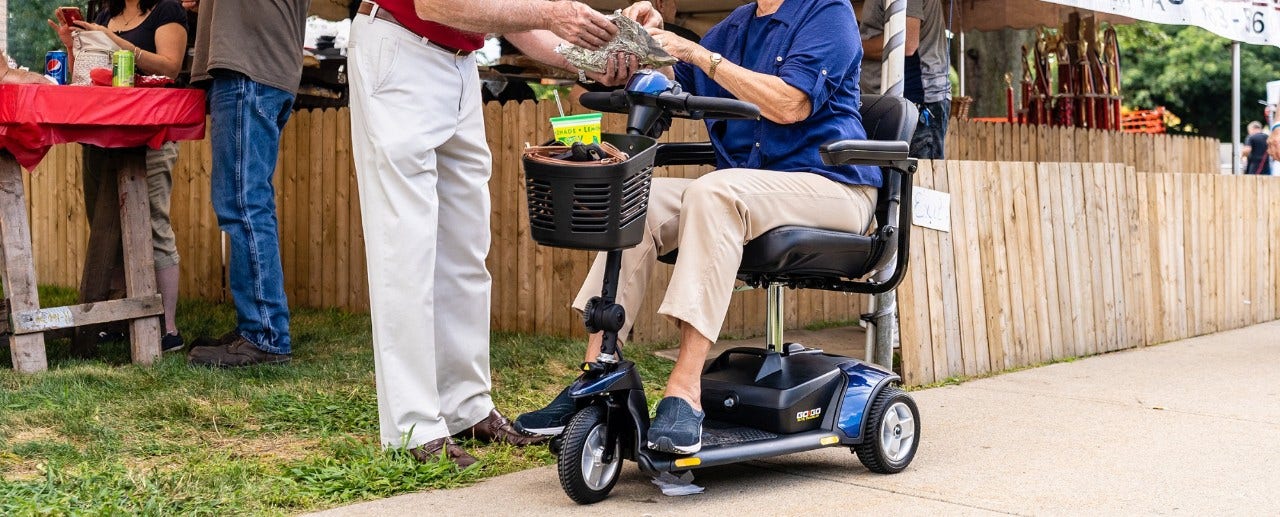
Does Medicare Pay for Wheelchairs?
As people age, changes in mobility are common. Whether due to aging or an existing mobility disability, understanding Medicare's coverage can help ease concerns about mobility challenges and the costs of mobility aids, including wheelchairs.
Medicare vs. Medicaid
Medicare and Medicaid are government programs designed to assist individuals with their healthcare needs, but they serve different purposes and populations. Medicare is a federal program primarily for individuals aged 65 or older, though it also provides coverage for some younger individuals with specific conditions. Medicaid is a joint federal and state program providing healthcare coverage to eligible low-income individuals and families, regardless of age. While both programs can cover mobility aids like wheelchairs, the criteria for eligibility, the extent of coverage, and the approval process can differ.
What Are the Four Medicare Parts?
- Part A (Hospital Insurance): Covers inpatient hospital stays, skilled nursing facility care, hospice care, and some home health care services.
- Part B (Medical Insurance): Includes coverage for doctor visits, outpatient care, and preventive services like flu shots and screenings. It also covers Durable Medical Equipment (DME) such as wheelchairs and canes, along with some home health services.
- Part C (Medicare Advantage): Provides all the benefits of Parts A and B, often with additional benefits like vision, dental, and hearing. It may also include prescription drug coverage similar to Part D.
- Part D (Prescription Drug Coverage): Covers prescription medications, including both brand-name and generic drugs, and is offered through private insurance companies.
What Is Durable Medical Equipment?
Durable Medical Equipment (DME) is medical equipment that can withstand repeated use. Durable medical equipment can include mobility aids like walkers, canes, crutches, wheelchairs, and scooters, as well as other aids like oxygen tanks, patient lifts, and blood sugar monitors. To qualify as DME, these aids must serve a medical purpose that enhances daily living. For Medicare to cover the cost, the equipment must be medically necessary, prescribed by a healthcare provider, and used primarily in the home.
How to Get Approved for a Wheelchair
To secure a wheelchair through Medicare, follow these guidelines:
- Consultation: Schedule a face-to-face consultation with a healthcare provider who will assess your mobility needs.
- Medical Necessity: Your provider will determine if a wheelchair is medically necessary for your condition. This assessment is crucial for moving forward with Medicare coverage.
- Prescription: Once medical necessity is established, obtain a prescription from your healthcare provider. This prescription is essential for the Medicare process.
- Choose a Supplier: Select a Medicare-enrolled Durable Medical Equipment (DME) supplier. These suppliers are approved to provide equipment under Medicare's coverage guidelines.
- Paperwork: Work closely with both your healthcare provider and the supplier to complete and submit the necessary paperwork. This collaboration helps streamline the process and ensures compliance with Medicare requirements.
How Much Does a Wheelchair Cost with Medicare?
The cost of a wheelchair varies greatly based on type. A manual wheelchair, which you self-propel, typically costs less than a power wheelchair. Medicare usually covers 80% of the approved amount, leaving you responsible for the remaining 20% after meeting your Part B deductible. Additional payments may apply depending on your plan.
What Diagnosis Qualifies for a Wheelchair?
Medicare coverage for wheelchairs is not strictly based on condition but rather on the medical necessity of the wheelchair for the individual. While specific diagnoses are not listed as qualifiers, conditions that significantly impair mobility and make it difficult to perform daily activities at home may qualify. These can include severe arthritis, neurological disorders, or other chronic conditions that affect mobility. If a person can manage their mobility needs with less costly equipment like a cane or walker, or if the wheelchair is only needed for certain activities, Medicare may not cover the wheelchair.
Understanding Medicare Coverage for Wheelchairs
Medicare Part B (Medical Insurance) generally covers the cost of medically necessary DME, such as wheelchairs. If you’re enrolled in Medicare and meet certain guidelines, your out-of-pocket cost for a wheelchair could be significantly reduced. It's important to note that Medicare only covers DME from Medicare-approved suppliers.
What Kind of Wheelchair Will Medicare Pay For?
Medicare will typically cover power or manual wheelchairs, as well as scooters, whether they are custom fit or standard. Medicare typically does not cover a wheelchair if it is only needed for occasional use, such as when going shopping or to medical appointments. Medicare covers wheelchairs when they are deemed medically necessary for performing activities of daily living (ADLs) within the home environment, and not just for convenience or occasional use outside the home.
Medicare Advantage Plans and Wheelchairs
Some might opt for Medicare Advantage Plans (Part C) instead of Original Medicare (Parts A and B). These plans are offered by private companies approved by Medicare and must cover at least the same benefits as Medicare Part A and Part B. Often, they offer additional benefits, which can include more comprehensive coverage for DME like wheelchairs. These plans can also help cover coinsurance and other out-of-pocket expenses.
To further understand Medicare and its coverage for durable medical equipment, explore the related articles below. If you're considering a wheelchair accessible vehicle, reach out to your local BraunAbility dealer. Although Medicare does not cover wheelchair accessible vehicles, there are various options available through BraunAbility Financial Services to help you find mobility and independence.




